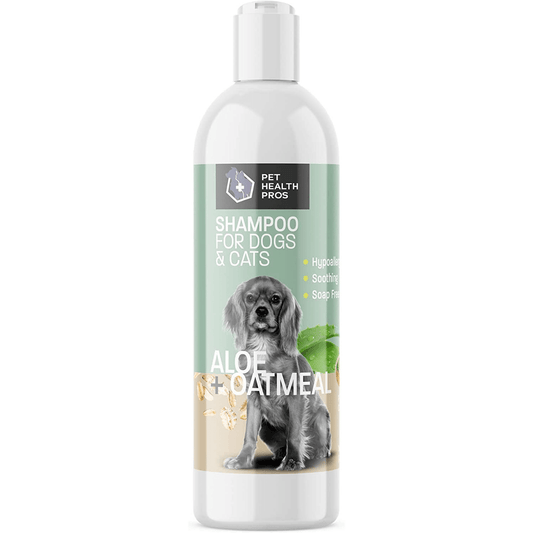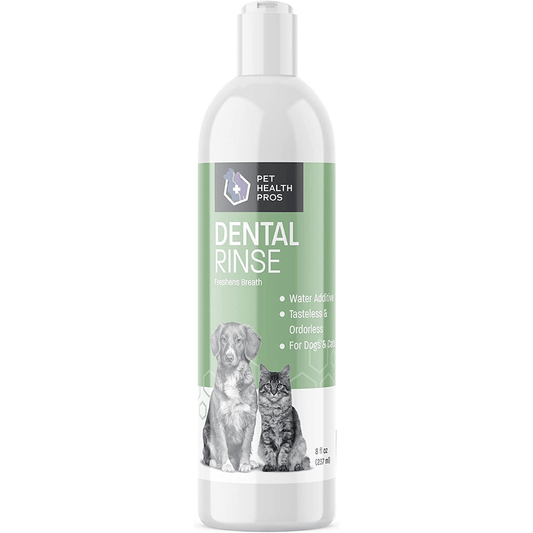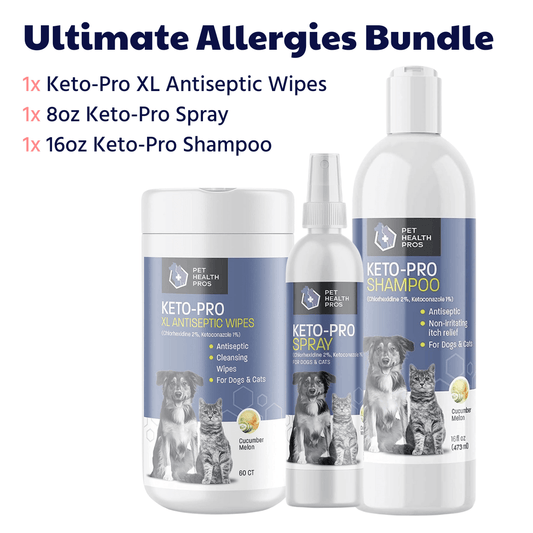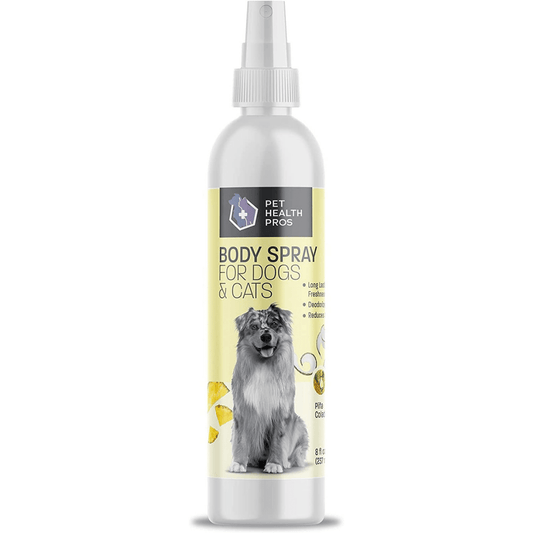Caring for your dog's health involves more than just regular vet visits and a balanced diet. One essential aspect of pet care is maintaining proper hygiene, especially when it comes to wounds and infections. Antiseptic flushes can be a vital tool in your pet care arsenal, helping to prevent infections and promote faster healing. In this comprehensive guide, we'll walk you through everything you need to know about using antiseptic flush for dogs, from understanding what it is to choosing the right product and applying it safely.
Key Takeaways
- Antiseptic flushes are essential for preventing infections and promoting faster healing in dogs.
- Common signs that your dog may need an antiseptic flush include redness, swelling, and discharge from wounds.
- Always consult your veterinarian before starting any new treatment to ensure it's safe and appropriate for your dog.
- Proper application involves cleaning the area, applying the flush, and monitoring for any adverse reactions.
- Choosing the right antiseptic flush involves considering factors like ingredients, brand reputation, and specific needs of your dog.
Understanding Antiseptic Flush for Dogs
What is Antiseptic Flush?
Antiseptic flush is a specially formulated solution used to clean and disinfect wounds, cuts, and abrasions on dogs. It helps prevent infections by eliminating bacteria and other pathogens from the affected area. This solution is often recommended by veterinarians for its effectiveness and ease of use.
Why Use Antiseptic Flush for Dogs?
Using antiseptic flush on your dog can significantly reduce the risk of infections, promote faster healing, and maintain overall skin health. It's particularly useful for dogs that are prone to skin issues or have recently undergone surgery. By incorporating antiseptic flush into your pet care routine, you can ensure a healthier and happier life for your furry friend.
Common Ingredients in Antiseptic Flush
Antiseptic flush solutions typically contain ingredients like chlorhexidine, povidone-iodine, and alcohol. These components are known for their antimicrobial properties and are safe for use on dogs when applied correctly. Always check the label for any potential allergens and consult your veterinarian if you're unsure about the ingredients.
For pet owners looking for trusted health solutions, Pet Health Pros offers expertly crafted supplies that ensure well-being at an affordable price, backed by decades of professional experience.
When to Use Antiseptic Flush for Your Dog
Recognizing the early signs of infection in your dog is crucial. Look for symptoms such as redness, swelling, or discharge from wounds or irritated areas. If your dog is excessively licking or scratching a particular spot, it might be an indication of an underlying issue that requires attention. Early detection can prevent more severe health problems down the line.
Using antiseptic flush as a preventative measure can help maintain your dog's overall skin health. Regularly cleaning minor cuts, scrapes, or abrasions can prevent infections before they start. This is especially important for dogs that are active or have a history of skin issues. Incorporating antiseptic flush into your dog's grooming routine can be a proactive step in ensuring their well-being.
Before starting any new treatment, it's always best to consult your veterinarian. They can provide personalized advice based on your dog's specific needs and health history. Your vet can also recommend the most suitable antiseptic flush products and guide you on how to use them effectively. Professional guidance ensures that you are taking the right steps to care for your pet's health.
Regular check-ups and consultations with your veterinarian are essential for maintaining your dog's health and catching any potential issues early.
How to Properly Apply Antiseptic Flush
Step-by-Step Application Guide
Applying antiseptic flush to your dog involves several careful steps to ensure effectiveness and safety. Follow these steps meticulously:
- Prepare the Area: Clean the area around the wound or infection with a mild soap and water. Pat dry with a clean towel.
- Apply the Antiseptic Flush: Gently pour or spray the antiseptic flush directly onto the affected area. Ensure thorough coverage.
- Allow to Air Dry: Let the area air dry completely. Avoid covering it with bandages unless advised by your veterinarian.
- Monitor Your Dog: Keep an eye on your dog to prevent them from licking or scratching the treated area.
Safety Precautions
When using antiseptic flush, it's crucial to follow safety guidelines to protect your dog:
- Avoid Contact with Eyes and Mouth: Ensure the antiseptic flush does not come into contact with your dog's eyes or mouth.
- Use as Directed: Only use the product as directed by the manufacturer or your veterinarian.
- Store Properly: Keep the antiseptic flush out of reach of children and pets when not in use.
Always consult your veterinarian before starting any new treatment to ensure it is appropriate for your dog's specific condition.
Tools and Supplies Needed
To apply antiseptic flush effectively, you will need the following tools and supplies:
- Antiseptic flush solution
- Clean towels or gauze
- Mild soap
- Water
- A clean, dry area for application
Having these supplies ready will make the process smoother and more efficient.
Benefits of Using Antiseptic Flush for Dogs
Promotes Faster Healing
Using antiseptic flush for dogs can significantly speed up the healing process for various skin issues and wounds. The antiseptic properties help to eliminate harmful bacteria and pathogens, allowing the skin to recover more quickly. This is particularly beneficial for dogs with chronic skin conditions or those prone to infections.
Prevents Infections
One of the primary benefits of antiseptic flush is its ability to prevent infections. By keeping the affected area clean and free from harmful microorganisms, it reduces the risk of complications. This is especially important for dogs with open wounds or surgical sites, where the risk of infection is higher.
Supports Overall Skin Health
Regular use of antiseptic flush can support your dog's overall skin health. It helps to maintain a clean and healthy skin environment, which can prevent future issues. This is particularly useful for dogs with sensitive skin or those prone to allergies. Using products like aloe wipes for dogs can also provide additional soothing benefits, promoting healthy skin and providing relief from itching.
Consistent use of antiseptic flush can make a noticeable difference in your dog's skin health, contributing to their overall well-being.
Choosing the Right Antiseptic Flush for Your Dog
Factors to Consider
When selecting an antiseptic flush for your dog, it's essential to consider several factors to ensure you choose the best product. Your dog's specific needs should be the primary consideration. For instance, if your dog has sensitive skin, opt for a gentle formula. Additionally, consider the type of infection or condition you are treating, as some antiseptic flushes are formulated for specific issues.
Recommended Products
There are various antiseptic flush products available on the market. Some of the highly recommended ones include:
- Chlorhexidine-based flushes: Known for their effectiveness in reducing infections and promoting hygiene.
- Povidone-iodine solutions: Effective for a broad range of infections.
- Saline solutions: Ideal for gentle cleaning and minor wounds.
Reading Labels and Ingredients
Reading the labels and ingredients of antiseptic flush products is crucial. Look for products that contain high-quality ingredients and avoid those with harsh chemicals that could irritate your dog's skin. It's also beneficial to choose products that are backed by veterinary recommendations and have positive customer reviews.
For best results, always follow your veterinarian's instructions when using antiseptic flushes. This ensures that you are enhancing your dog's health and promoting faster healing.
Potential Side Effects and How to Handle Them
Recognizing Adverse Reactions
When using antiseptic flush for dogs, it's crucial to be aware of potential side effects. Adverse effects are related to topical irritation and increased systemic levels of iodine. Common reactions include acute contact dermatitis, erythema, wheals, edema, and papules. Monitoring your dog for these symptoms can help in early detection and management.
Immediate Steps to Take
If you notice any adverse reactions, take immediate steps to mitigate the effects:
- Rinse the affected area with clean water to remove any remaining antiseptic solution.
- Apply a soothing ointment or cream recommended by your veterinarian.
- Keep your dog from licking or scratching the affected area to prevent further irritation.
- Monitor your dog closely for any worsening symptoms.
When to Seek Professional Help
In some cases, professional veterinary care may be necessary. If your dog's symptoms persist or worsen, consult your veterinarian promptly. They can provide specialized care and may recommend alternative treatments to avoid further complications.
Always consult your veterinarian before starting any new treatment to ensure it's safe and appropriate for your dog's specific needs.
Maintaining Your Dog's Health Post-Treatment
Follow-Up Care
After applying antiseptic flush, it's crucial to monitor your dog's healing process. Regular check-ups with your veterinarian can help ensure that the infection is fully resolved and prevent any complications. Keep the treated area clean and dry, and follow any additional care instructions provided by your vet.
Monitoring for Recurrence
Even after successful treatment, infections can recur. Watch for signs of redness, swelling, or discharge, which may indicate a return of the infection. Early detection is key to preventing more serious issues. Maintain a routine of checking your dog's skin and overall health to catch any problems early.
Nutritional Support for Healing
A balanced diet is essential for your dog's recovery. Ensure they receive adequate nutrients to support their immune system and overall health. Consider supplements if recommended by your veterinarian. Here's a simple table to guide you on essential nutrients:
| Nutrient | Importance | Sources |
|---|---|---|
| Protein | Tissue repair and growth | Meat, fish, eggs |
| Omega-3 fatty acids | Reduces inflammation | Fish oil, flaxseed |
| Vitamins A, C, E | Antioxidants, skin health | Carrots, sweet potatoes, berries |
Ensuring your dog receives proper post-treatment care can significantly enhance their recovery and overall well-being. Regular monitoring and a nutritious diet are key components of effective post-treatment care.
Maintaining your dog's health post-treatment is crucial for their overall well-being. Our range of products, from medicated shampoos to joint supplements, ensures your furry friend stays in top shape. Visit our website to explore our vet-approved, USA-made products and keep your pet happy and healthy.
Conclusion
In conclusion, using antiseptic flush for dogs is an essential part of maintaining your pet's health and well-being. By following the steps outlined in this guide, you can ensure that your dog receives the best care possible. At Pet Health Pros, we are committed to providing superior, affordable pet health supplies, crafted in collaboration with veterinarians and made with top-grade ingredients. Our products are backed by a 100% satisfaction guarantee, reflecting our dedication to the well-being of your pets. Remember, a healthy pet is a happy pet, and with the right care and products, you can help your furry friend lead a healthier, happier life.
Frequently Asked Questions
What is Antiseptic Flush?
Antiseptic flush is a liquid solution used to clean wounds and prevent infections in dogs. It typically contains ingredients that help kill bacteria and promote healing.
Why should I use antiseptic flush for my dog?
Using antiseptic flush helps to prevent infections, promote faster healing of wounds, and maintain overall skin health for your dog.
How often should I apply antiseptic flush to my dog's wound?
The frequency of application depends on the severity of the wound and your veterinarian's advice. Generally, it can be applied once or twice daily until the wound heals.
Are there any side effects of using antiseptic flush on dogs?
While antiseptic flush is generally safe, some dogs may experience mild irritation or allergic reactions. If you notice any adverse effects, discontinue use and consult your veterinarian.
Can I use antiseptic flush on any type of wound?
Antiseptic flush is suitable for minor cuts, abrasions, and surgical incisions. However, for deep or severe wounds, it is best to consult your veterinarian for appropriate treatment.
What should I do if my dog licks the antiseptic flush?
While antiseptic flush is usually safe, it's best to prevent your dog from licking the treated area. You can use an Elizabethan collar to prevent licking until the solution dries.









